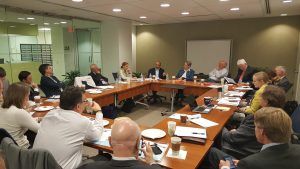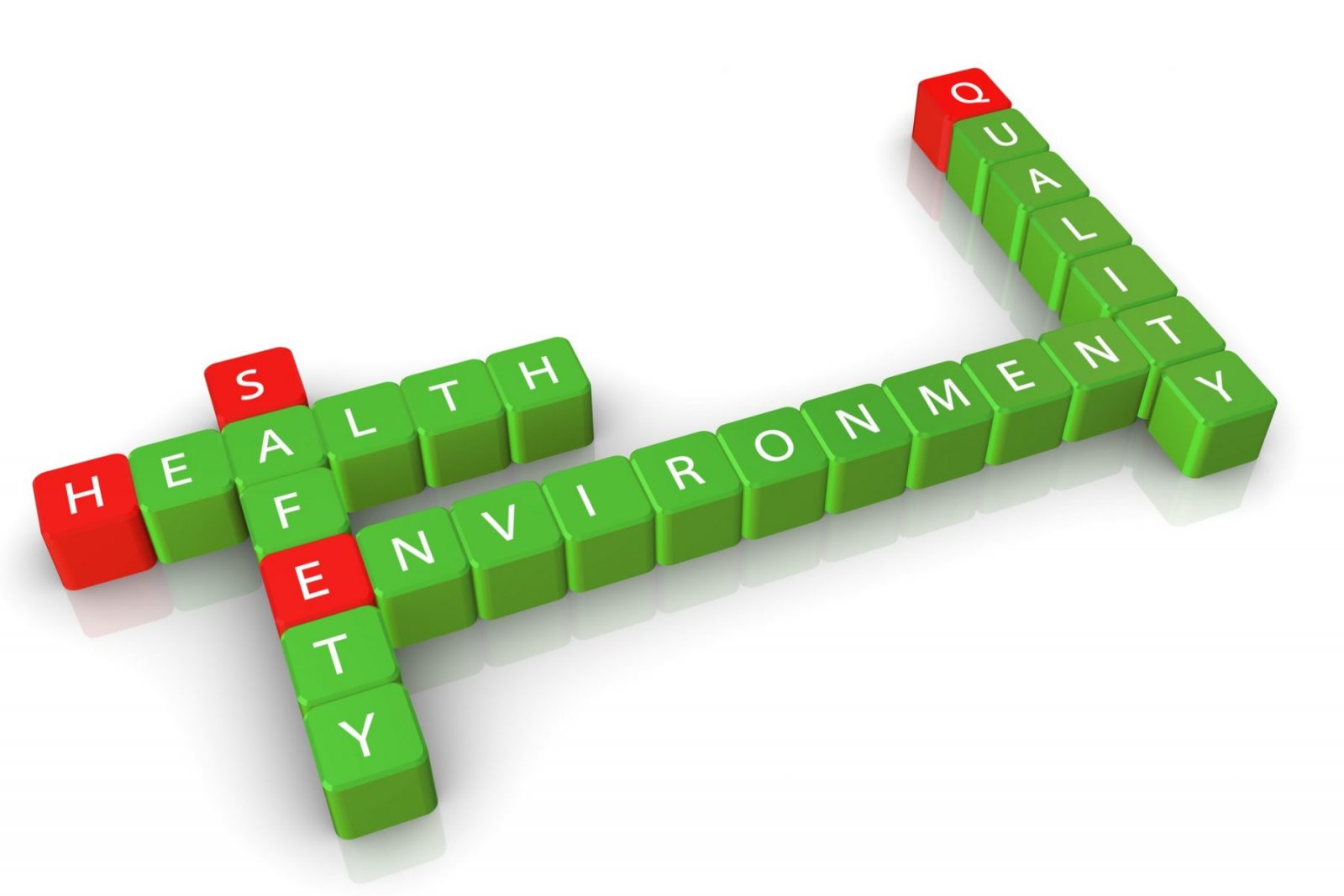 E&W Strategies convened its inaugural roundtable on June 9 in Washington DC with a program titled “From Worker Safety to VW and Flint: Enforcement Trends and Compliance Tips.” EHS leaders from across numerous sectors, including manufacturing, water, transportation, infrastructure and legal met to discuss a number of emerging issues in the context of effective compliance and enforcement. Presentations and guided discussions were led by Doug Parker, President of E&W Strategies (and former Director of EPA’s Criminal Division); Kanwer Kahn, Vice President of EHS for Suez, N.A.; and Angie Grooms, Regulatory Specialist with ERM (and former EHS Director for Duke Energy).
E&W Strategies convened its inaugural roundtable on June 9 in Washington DC with a program titled “From Worker Safety to VW and Flint: Enforcement Trends and Compliance Tips.” EHS leaders from across numerous sectors, including manufacturing, water, transportation, infrastructure and legal met to discuss a number of emerging issues in the context of effective compliance and enforcement. Presentations and guided discussions were led by Doug Parker, President of E&W Strategies (and former Director of EPA’s Criminal Division); Kanwer Kahn, Vice President of EHS for Suez, N.A.; and Angie Grooms, Regulatory Specialist with ERM (and former EHS Director for Duke Energy).
The morning roundtable covered the government’s current enforcement priorities, emerging trends in the environmental compliance space, and key strategies to position companies for this operating environment. The roundtable explored a number of pressing EHS compliance and enforcement related issues, including the water crisis in Flint, current and pending enforcement actions against VW and other manufacturers, as well as the growing intersection of worker safety and environmental laws. Dialogue focused on proactive steps – and shared success stories – that attending EHS leaders could incorporate into workplace programs.
Here are just a few key take-away points from the roundtable:
- Be vigilant and transparent about the quality of your data – environmental compliance data (and analysis) is increasingly accessible to regulators and environmental groups, and regulated entities must ensure their data is complete and accurate.
- Culture is paramount – effective compliance is achieved through a balance of “carrots” and “sticks.”
- Set standard Business Unit (BU) expectations through the EHS Management System – Policies and guidance that guide the BU to develop business specific portions, audit for compliance and adequacy
- Have an Executive Extended Staff or Steering Team – this works most effectively when you have a leadership with the authority and the internal political capital to engage the right BU leadership. Membership should include HR, Supply Chain, legal in addition to BU operations, major projects. In person meetings with social time will help to establish relationships between the BU members. BU members must participate with discussions/presentations about their BU issues, best practices, lessons learned from incidents and events, review of annual audit trends, and EHS goals and targets setting rather than just receiving reports and information from EHS staff.
- Implementation of systems and processes must get buy-in and support from middle managers and then managers and employees. Set clear expectations, hold them accountable for the details and adherence to the process and audit to verify.
- Systems and processes are important, they are needed in case the employee wins the lottery…. What needs to be done, when, how and who is going to do the task. Documentation of a task is not for the benefit of the experienced qualified employee, but for the new person who comes after them.
- Consistency is the key, in expectations, implementation and accountability. Work flows are identified; responsible employees are part of the work flow process development. The responsible employees are the ones who really understand what goes on in the field.
- Review the robustness your current legal requirements register. Best practice is to look at the universe of regulations (federal, state, local), imagine a funnel, narrow the universe down to what is applicable to your operations/situation, further narrow it down to what requirements are actionable for you. What comes out of the funnel are the requirements that need to have a task in your work management system. Note – an Outlook calendar entry might remind an employee of what needs to be done, but it isn’t a work management system and it isn’t traceable, might not be able to be seen by others and may not be sufficient to demonstrate to outsiders that the tasks were completed and fulfilled the requirement.
- Biggest hiccups – mergers and acquisitions – the newly acquired facilities that have been run/managed by others who had a different focus, different processes, different management systems. To overcome, quickly identify the governing EHS management system, processes and work management systems. Then, refresh, refocus, re-deploy and train affected executives, middle managers, managers and employees.
- To err is human. Promote culture of forgiveness for errors and encourage reporting.
- Regulators don’t expect perfection, but they do expect a good faith effort to comply with the law.
The roundtable is the first in a series being sponsored by E&W Strategies that will focus on key issues and trends in compliance and enforcement along with helpful benchmarking elements of an effective EHS program. Information on upcoming roundtables, or to be added to the E&W Group’s quarterly newsletter mailing list, can be obtained by signing up on the E&W’s website or emailing a request to ken.maynard@earthandwatergroup.com.




